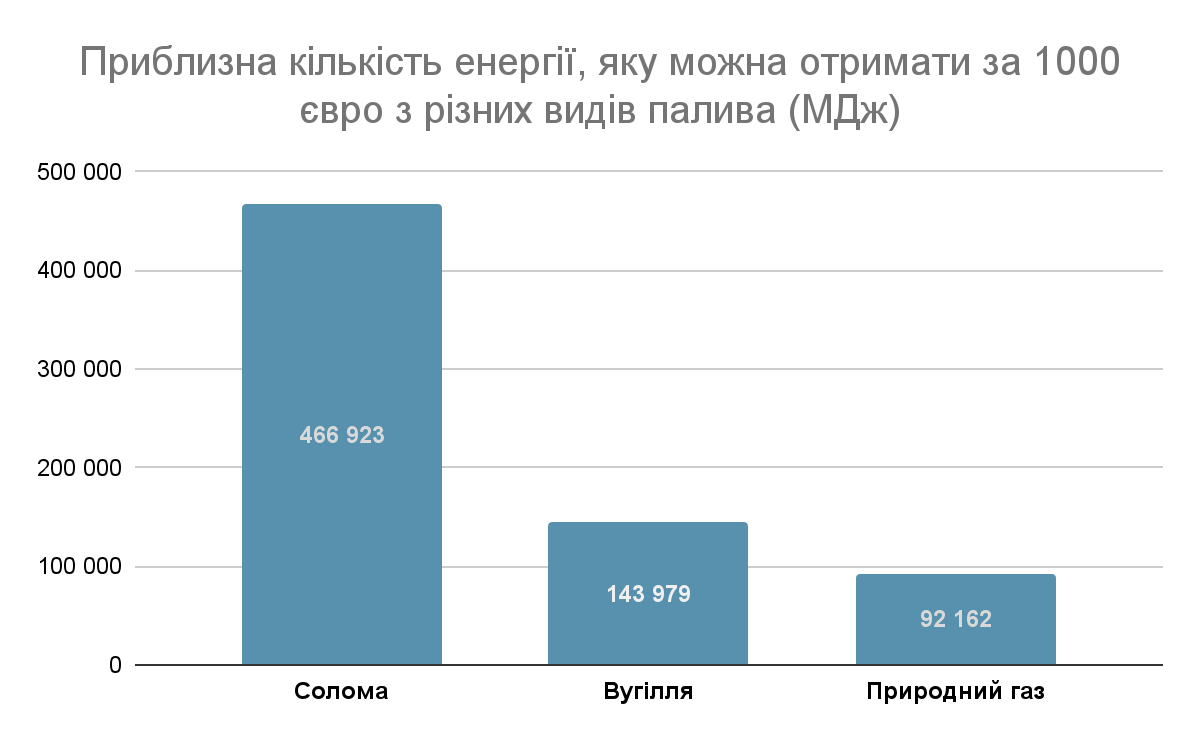
What is the problem?
One of the mechanisms for improving the Ukrainian environment, preserving natural resources, and reducing emissions into the air is the rejection of fossil fuels and the search for alternative energy sources. The field of green energy, such as wind or solar, is actively developing, but the variability and unpredictability of the weather do not allow the establishment of a sufficiently stable energy supply throughout the year.
There is another source of green energy — bio-waste. Straw, husks, and waste from farming can generate heat and electricity. Unfortunately, this method of obtaining energy in Ukraine is significantly underestimated.
The deputy head of the Veselka farm in the Dnipro region, Maryna Sushko, shared with Rubryka that the company sometimes loses its harvest due to a large amount of straw that they have nowhere to sow:
"Straw remains on the field as a nitrogen-rich biofertilizer. We never smoke straw in the fields. Sometimes we even lose the next year's yield due to a large number of harvest residues from the previous year. We don't have equipment for collecting straw, and there are very few domestic animals left in the community, so there is no demand for straw," says Sushko.
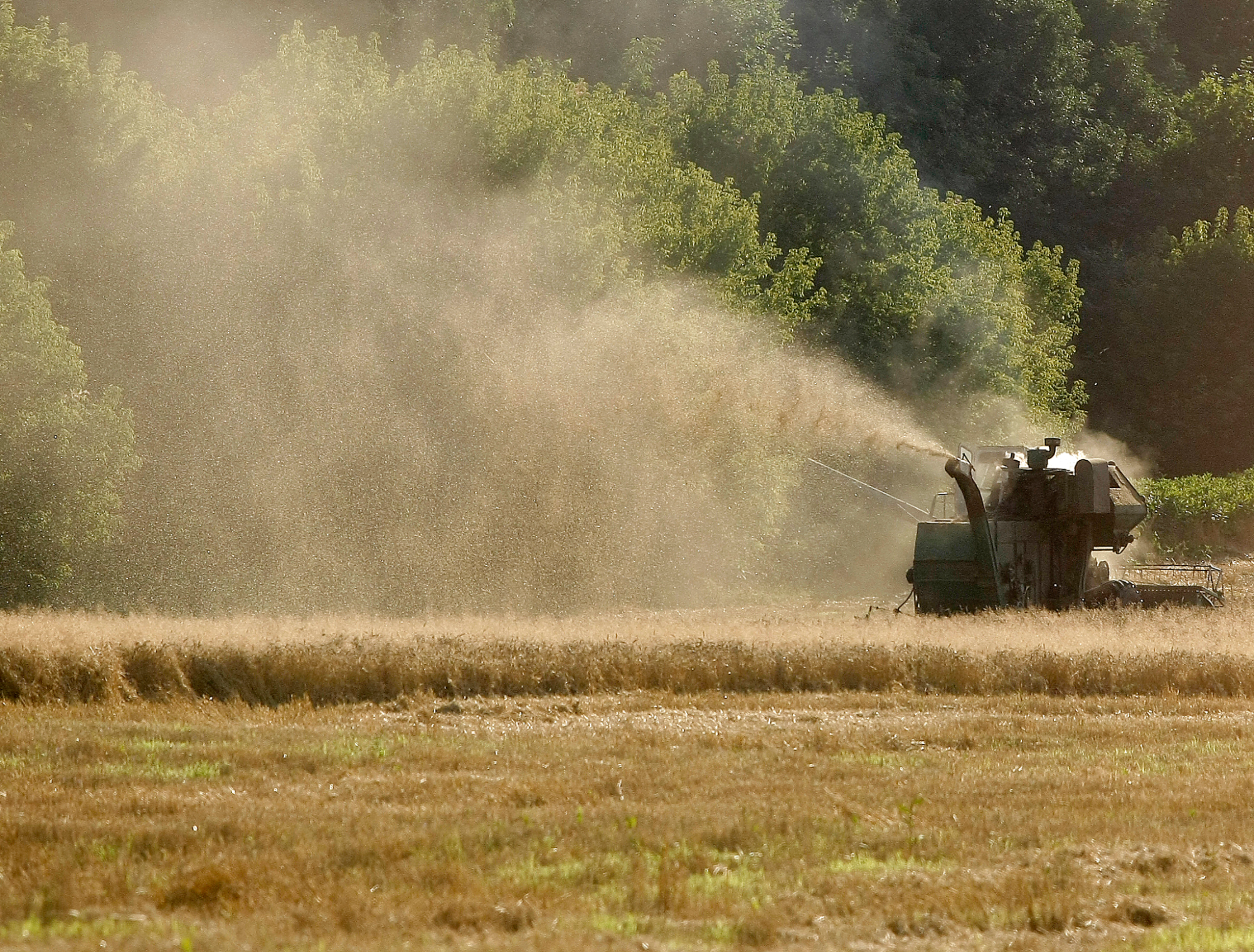
Photo: Mykola Tymchenko, Rubryka
As it turned out, there is one solution for three problems — insufficient use of green energy, high fuel prices, and the impossibility of recycling bio-waste.
What is the solution?
Bio-waste is Ukraine's gold, which is currently thrown into the trash
According to the Bioenergy Development Roadmap, the largest components of the entire mass of biowaste are agricultural residues (44% of the total volume) and energy plants (32%). Among agricultural residues, the largest share is precisely the straw of grain crops (33%) and by-products of the production of corn for grain (35%).
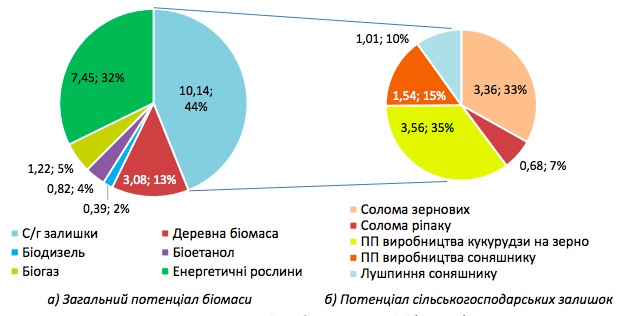
Structure of biomass potential in Ukraine
Straw, like husks, is a source of thermal energy, the technology of obtaining which is already well developed, as well as the technology of using it for burning fuel, coal, wood, briquettes, etc. But the energy use of straw in Ukraine is less than one percent, and corn and sunflower waste is generally considered insignificant — a fuel resource with an estimated cost of $3-4 bln is simply not used in energy-dependent Ukraine.
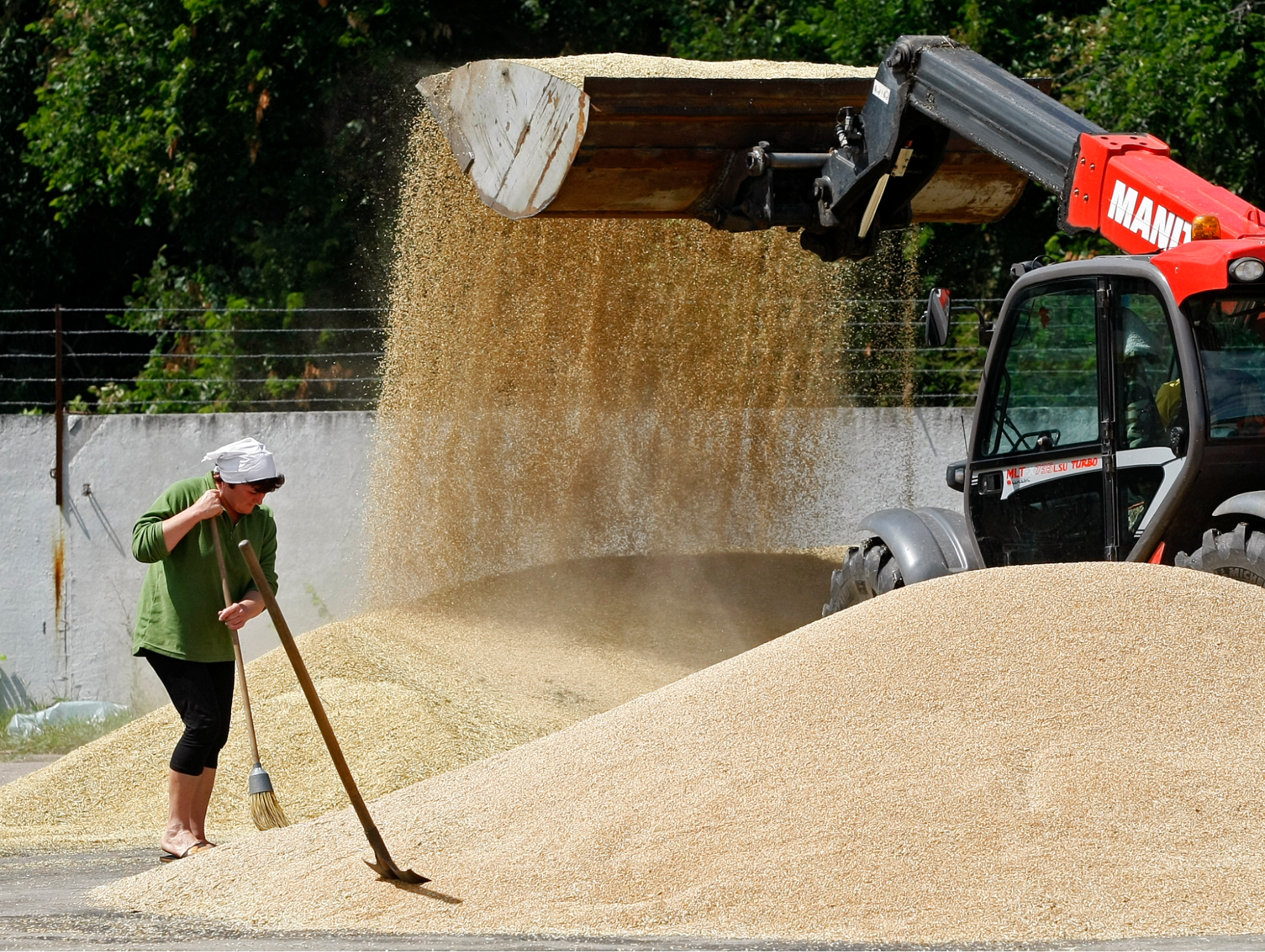
Photo: Mykola Tymchenko, Rubryka
"Ukraine is the only country in Europe that lags in the use of biological resources," explains Doctor of Technical Sciences Professor Valeriy Fedoreyko. "We grow approximately 100 million tons of grain annually, each ton of which produces a ton of biowaste. Suppose we remove every third ton, as the Americans and Europeans do, absolutely without harming the processes. In that case, we will receive 25-30 million tons of bio-waste annually: elevator waste, chaff, straw."
If you delve into the calculations, you can get staggering numbers. Three tons of bio-waste equals a thousand cubic meters of natural gas in terms of the energy it can generate. If the production facilities could process all bio-waste, we would get energy equivalent to 10 billion cubic meters of gas. This is a third of the gas consumption in Ukraine for a year.
The use of such bio-waste is much cheaper than natural gas or coal. For comparison, three tons of corn cobs, from which you can get the equivalent amount of energy as from a thousand cubic meters of gas, will cost only $80. This amount of gas costs about a €1000 in Europe and Ukraine can get it for less than 100. Here is another example: two tons of biowaste in terms of energy value are equal to a ton of coal, but a ton of coal currently costs $270-400, while 2 tons of straw, as you already know, are about $50.
From the graph, you can understand how bio-waste as a fuel is more economically feasible than natural gas and coal (if you focus on the price for industrial consumers). Source: RubrykaSo, thanks to biofuel, produced in the open air, Ukrainians can get energy 14 times cheaper than gas, seven times more affordable than coal, or seven to 10 times cheaper even than traditional green energy — hydrogen-based.
"From the point of view of the availability of biofuel resources, Ukraine is a completely self-sufficient country," says the professor.
What can be done?
One solution for communities and private households is processing straw into pellets to be used for heating. The creation of such enterprises can reduce heating costs and provide heat to non-gasified settlements:
The cost of one pellet production line currently amounts to about $29 thousand. On the balance sheet of most village councils, there are free premises where such lines can be placed. The line will cost no more than $32 thousand with village communities' support. The transportation of raw materials can be carried out by the transport of agricultural enterprises that operate within the villages and will act as suppliers of raw materials, which will allow for minimizing their cost — economists proposed this model in one of the recent scientific publications.
Today, the market value of straw pellets ranges from $160/t. Creating a cooperative in the community can reduce the price to $54-81/t with minimal delivery costs because the pellet production lines will be located on the spot. That is, one household that invests about $135-190 in creating a cooperative can count on environmentally friendly solid fuel at a maximum of $81/t with delivery.
Operation of a press for making straw briquettes
And that's not all. Private households can provide their own needs for fuel for heating through the independent processing of straw and other residues from their own agricultural production. Semi-automatic pellet presses cost $270-1350, but there are also more affordable proposals, such as ordinary manual presses for $40-50. With their help, one can make solid fuel briquettes at home from grain, leguminous straw, and fallen leaves.
The head of the Bioenergy Association of Ukraine, Heorhiy Heletukha, believes that the reason why the population has not yet switched to alternative types of fuel is the economically impractical and unprofitable model of subsidizing gas:
"We do not have the same gas price as the rest of the world. The population pays approximately $216 for 1,000 cubic meters, the budget sphere enterprises — $445, and only industry pays the full commercial price. Now it is $540, and in the winter, it was over $1000," the expert told Rubryka. "It turns out that gas is the cheapest fuel for the population, but it is not so because the amount subsidized to the gas company so that the population can pay only $216 for gas is taken from taxes. Set a commercial price, and it will immediately become profitable for everyone to use alternative energy sources and insulate houses."
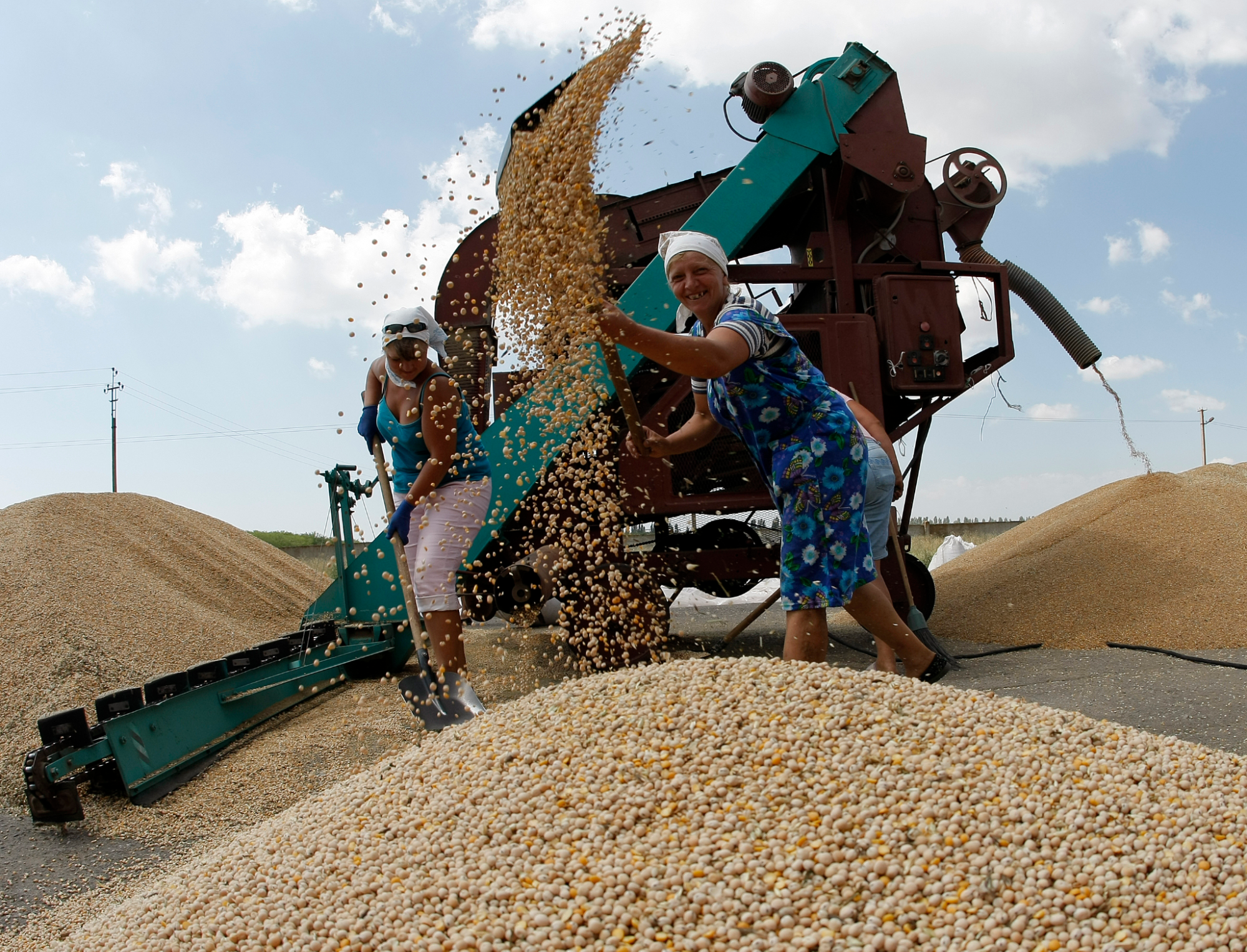
Photo by Mykola Tymchenko, Rubryka
Using straw instead of gas in industry
Technology for converting straw into energy on an industrial scale already exists and works in Ukraine. One of the samples was created at the Center for Energy-Efficient Technologies of the Ternopil National Pedagogical University named after Hnatyuk, under the leadership of Valeriy Fedoreyko. The department employees privatized the landfill to conduct research, and after 10 years of fruitful work, they achieved success. The scientists invented a generator that works on residues from the agricultural sector and produces thermal energy that can replace natural gas.
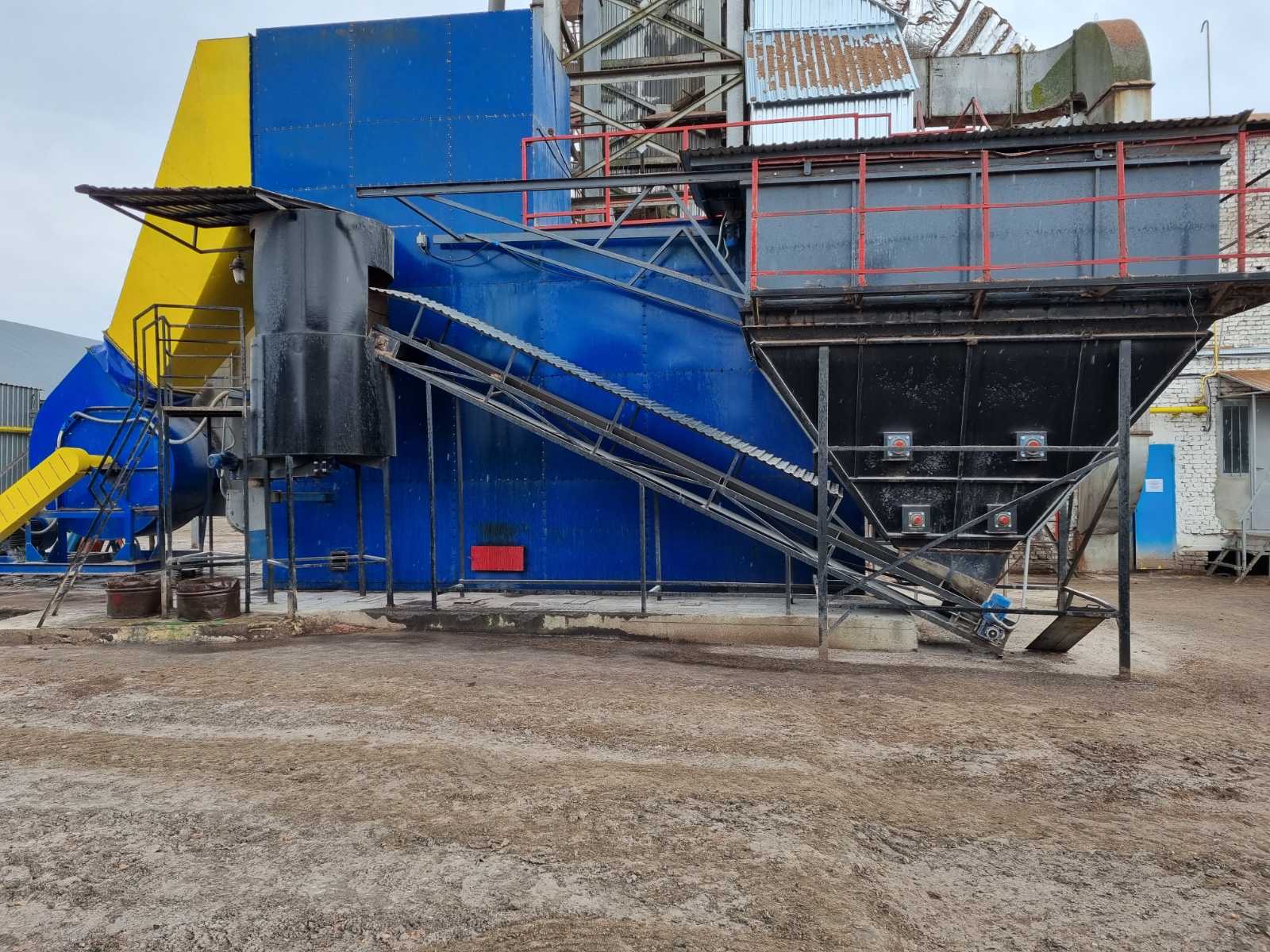
3,000 kW generator-utilizer. Photo:Valeriy Fedoreyko
Such generators can dry grain and concrete, fire bricks, and heat large premises, including greenhouses.
"These are the industries from which natural gas needs to be taken away and redirected to the technologies where it is needed. In this way, we will diversify the market with cheap energy and displace natural gas, against the background of which it will become cheaper," says the professor.
Generators-utilizers should be placed on the elevators of farms — the most practical way to save resources on logistics. Currently, 2,000, 3,000, and 6,000 kW utilization generators are already available. A 1,000 kW generator-utilizer costs $40.6 thousand, and a higher capacity one costs $81.2-108 thousand. The payback period for a 1 MW generator is three months. These are fantastic technical and economic indicators for a 100% Ukrainian product.
The generator is not only able to produce cheap thermal energy, but it also reduces the burden on the environment by disposing of bio-waste.
Why is burning straw better than leaving it in the fields?
Shredded straw, corn cobs, and sunflower husks are high-calorie biofuels that do not produce emissions and do not create a burden on the environment.
"This is the so-called reverse photosynthesis. When a plant grows, it takes CO2 from the atmosphere, and when it burns, it releases the same volume. If these residues simply rot, they emit more CO2 than during combustion," explains Fedoreyko.
That is why the professor calls his invention a generator-utilizer. This could solve the problem of excess straw, for example, at the Veselka farm in the Dnipropetrovsk region — at the beginning of the article, Sushko says that she has nowhere to put straw. If this or neighboring enterprises had a similar generator, there would be no problems with a place for bio-waste disposal.
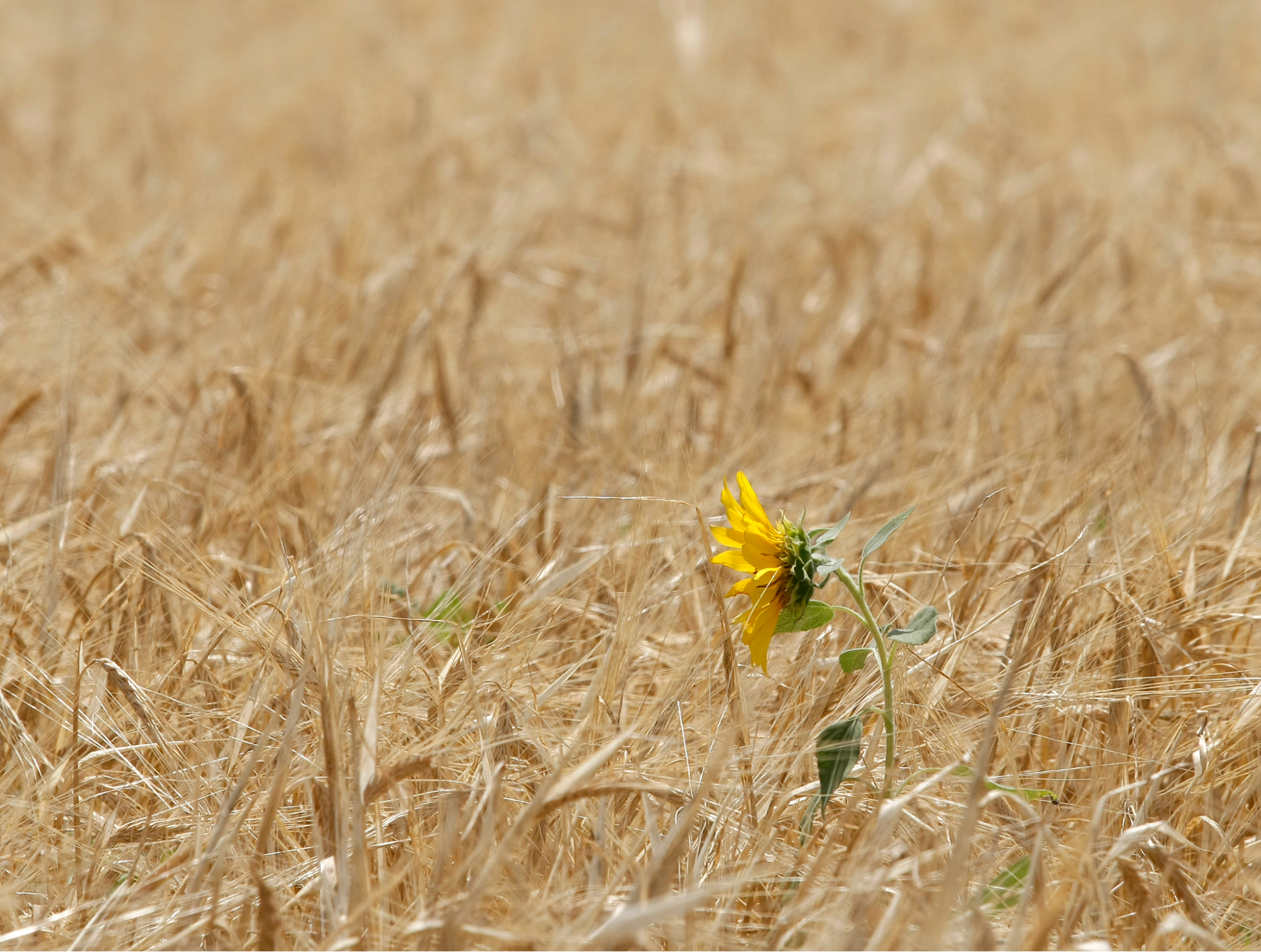
Photo: Mykola Tymchenko, Rubryka
Another plus is that the "fuel" for such a generator can be stored in the open, and even plant remains collected three years ago are suitable
Turning straw into green electricity is almost a done deal
In the future, it will be possible to obtain heat and electrical energy from the generators created in Ternopil. The Kharkiv Institute of Mechanical Engineering Problems of the National Academy of Sciences of Ukraine has already created a sample of a turbine and a compressor to convert cheap thermal energy into affordable electrical energy. This year, the first tests of the system will begin.
The project should be presented under the Horizon program in Europe. Together with the Dnipro Polytechnic, the Center for Energy-Efficient Technologies is preparing several projects with eight European scientific institutions to attract scientific funds to Ukraine.
"We offer the EU Ukrainian developments that will allow us to generate energy equivalent to billions of cubic meters of gas, and today this is the cheapest way to produce thermal energy," says the project manager.
Does it really work?
Indeed, what works well under ideal conditions in the laboratory cannot always be implemented in practice. But Valeriy Fedoreyko claims: there are already more than two dozen such generators throughout Ukraine — most of them in the Ternopil region and Kyiv and Chernihiv regions.
Rubryka contacted candidate of technical sciences Ivan Iskerskyi, who is the head of the Grain warehouses of Ternopil association and the director of the elevator in the city of Khorostkiv. Here, four generators have already been installed — 3 of 2 MW each and one more with a capacity of about 3 MW.
"If our dryers, working on gas, consumed 300 m3 of gas per hour, it turns out that we save 7.2 thousand cubic meters of gas per day using waste generators," Iskerskyi continues. "In Ukraine, we generate a huge amount of bio-waste, such that we can replace all the gas for grain drying, greenhouse farms, and heating of various complexes."
Another generator, the most powerful, 6 MW, will be installed this year. It will save more than 500 cubic meters of gas per hour for grain drying. The new generator is already 80% complete, and when it starts working, the company will stop using gas. Like all other developments, it is fully automated, using artificial intelligence (AI) elements.
Remains from cleaning grain and chaff are used as fuel here:
"We had 500-600 tons of waste, and the other part was bought from neighboring elevators, which had no place for it. People have a problem – where to put that waste? And we dispose of it: we burn and dry the grain at the expense of it," Iskerskyi shared.
Heletukha, head of the Bioenergy Association of Ukraine, says that farmers who use biomass to meet their energy needs benefit compared to those who use gas:
"In 2022, farmers left part of the corn in the field without harvesting. Why? Because they calculated that if they collected it and took it to a gas-powered dryer, the cost of the gas would be equal to the cost of the lake itself. The cost will be so high that they will not sell this corn afterward," the expert gives an example. "Up to 40% of the corn remained in the field to winter just to dry it right there. This is not a better practice; the crop quality will be worse, but the price will be lower. Only those who worked on biomass harvested crops."
What other solutions already exist?
In Ukraine, there are two classes of new technologies for obtaining energy. The first is the combustion, and the second is biogas production, when the same raw materials, straw, corn stalks, and sunflower husks, are loaded into special containers, bacteria are added, and in 3-4 weeks, biogas begins to accumulate, which can be turned into energy.
It is cheaper to burn, but according to Heletukha, farmers do not really like to give away such raw materials. Fertilizers are added to the fields for growing raw materials: nitrogen, phosphorus, and potassium, which the plants absorb. That is why plant residues are sometimes left in the fields in some quantity to return these substances back to the ground. When burned, these substances disappear. When producing biogas, fertilizers can be recovered and reused in the field. That's why there is a trend to create biomethane factories.
Myronivskyi Hliboprodukt (MHP) is engaged in poultry farming, meat processing, and growing grain crops. The company prioritizes the use of green energy. In 2019, two biogas complexes for waste disposal were built at the Vinnytsia enterprise of MHP.
Organic agricultural waste of MHP is transformed in complexes into biogas and organic fertilizers and also allows for significantly reduced greenhouse gas emissions. Biogas is converted into thermal and electrical energy, and organic fertilizers are used on fields, allowing soil fertility restoration.
One can ensure the system works by looking at the numbers. After the first phase of the 12 MW Biogas Ladyzhyn complex was put into operation, it was possible to provide about 40% of the capacities of the agro-industrial cluster with green energy. Already the following year, total fuel consumption fell by 2.98%. Of course, not only thanks to biogas production: energy efficiency measures and obtaining a green electricity tariff also worked.
Scientist Valeriya Vovk from the Vinnytsia National Agrarian University calls the MHP biogas complex a leader in the territory of Vinnytsia and the whole of Ukraine in implementing waste-free production technologies, but it is not the only successful example. According to the National Commission for State Regulation of Energy and Public Utilities (NCRECP) data, as of October 1, 2022, 64 installations that produce energy from biogas have been installed in Ukraine.
How should the bio-economy develop in Ukraine?
In the latest study of the European Union, it is emphasized that the rational use of biomass, based on modern biotechnologies, and the directing of biomass flows to each sector of the bio-economy, ensuring the full production cycle — from supply to use and trade — will contribute to solving the problems of sustainable development.
In 2020, a roadmap for the development of bio-energy in Ukraine until 2050 was created. It says that in 2050, the potential of biomass in Ukraine can increase to more than 47.5 million tons per year, that is, practically double due to the development of the agricultural sector, and even under such conditions, Ukraine will process only 43% of the biomass potential available at that time. As for straw and agricultural residues, the share of their use will increase the most.
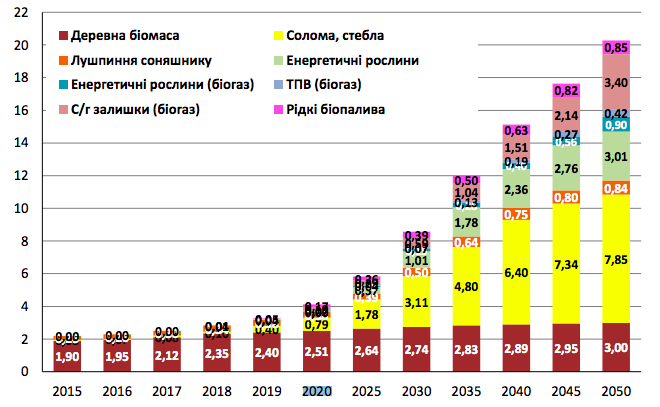
The structure of the use of biofuels in Ukraine until 2050 by their types, million tons, is proposed in the Roadmap
Heletukha explains what caused such an increase in the share of straw use:
"If they collect 40 centners of bio-raw materials per hectare in Europe and the USA, then in Ukraine, we have 10. All this is due to the fertility of the land: there, they use different technologies and fertilizers. When the road map was created, it was assumed that we would also technologically tighten up in agriculture, so the amount of straw, corn stalks, and sunflowers would also increase."
According to Heletukha, the situation in which the agricultural sector can completely abandon the use of gas is quite real: Ukraine already replaces 5.2 billion cubic meters of natural gas per year with biomass.
Under favorable conditions, Ukraine could even export biomethane and become one of the leaders in Europe in this position. It is hard to believe that only the bureaucracy is making this impossible. The issue is that certain restrictions have now been introduced. On the one hand, they seem to be heading for the export of methane, but there is a ban on the export of natural gas, and due to inexplicable inconsistencies in the customs documents, biogas also falls under the concept of natural gas. This issue can be resolved by adopting a couple of documents, an order, and a resolution from the Cabinet of Ministers, allowing biomethane to export. Then the production of billions of cubes will begin.
Therefore, there are several solutions for the state, and they are all very simple: change the definition of biogas in the legislation and gradually stop subsidizing gas for the population. In this case, the share of the use of bioresources can increase significantly, and Ukraine will be able to strengthen its position in the energy market, become less dependent and get one step closer to decarbonization.
Newsletter
Digest of the most interesting news: just about the main thing




